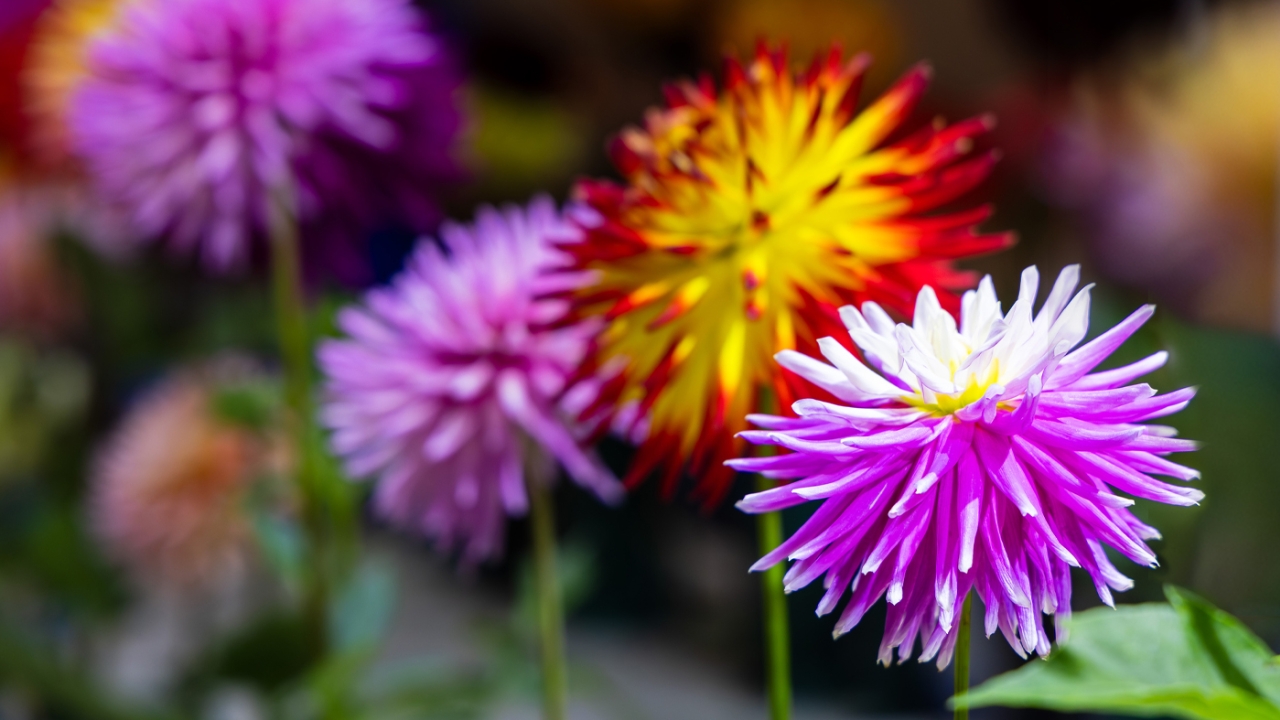

Smart Gardener
Good Form: Holiday Crafts from the Garden
Bringing a bit of your garden indoors to join a celebration can be as easy as cutting a few evergreen branches for a vase. But if you are a little bit more ambitious about your holiday decor, it's surprisingly easy to create sophisticated craft projects with flowers, foliage, nuts and pine cones, and foam forms, according to Nancy Clifton, Horticulture Program Specialist.
First, decide if you want your project to be fresh and fleeting or dried and long-lasting. "If you go dried, it can last for years if you store it properly," Clifton says. But for a very special occasion, nothing has the impact of a centerpiece tree or kissing ball made with fresh flowers, though it may last only a few days.
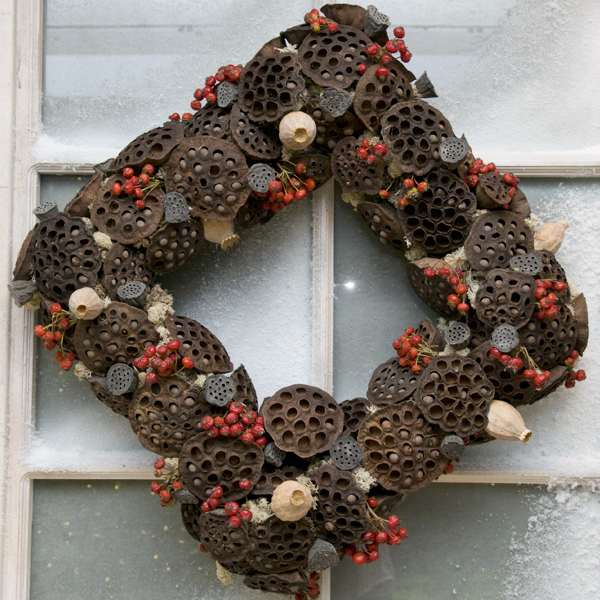
Use a variety of materials in your wreaths and centerpieces to add more dimension and interest.
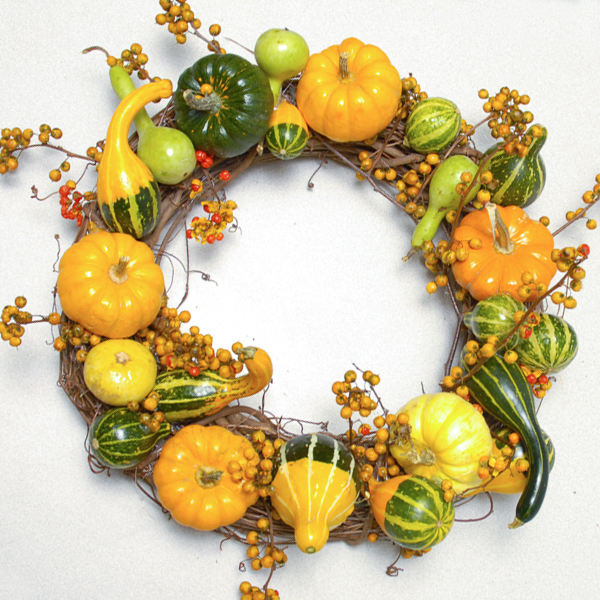
A grapevine wreath base with gourds and berries displays a variety of color and texture.
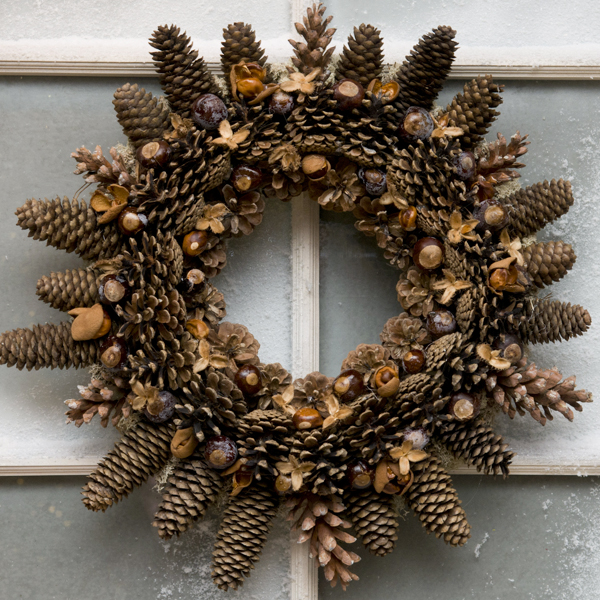
If well stored, pinecone or evergreen creations can last many seasons.
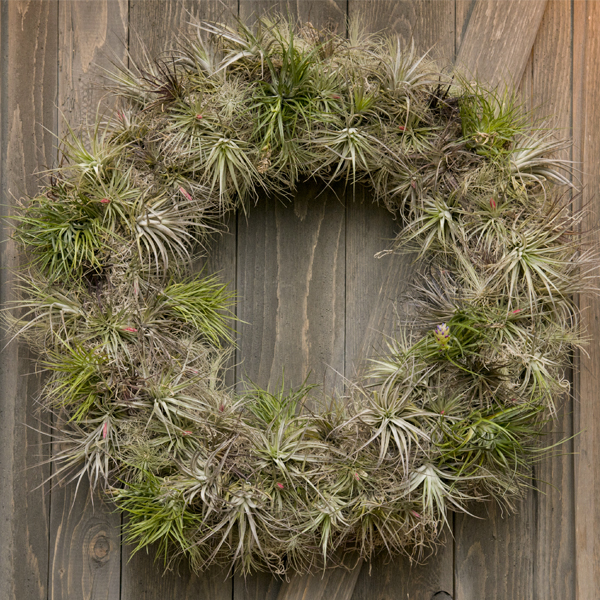
Lightly mist a bromeliad wreath to keep plants healthy and green.
Foam forms are sold at hobby and sewing stores. For dried arrangements, you'll use a regular plastic foam form and attach the material with a glue gun. For fresh flowers, you'll insert the stems into a shape made of green florist foam, which absorbs water. Soak the florist foam thoroughly before you start and set it on a waterproof tray while you work.
Using fresh flowers in winter will be a splurge, because form-based arrangements require a surprising number of blooms, Clifton says. So it's worth it to take the time to make a plan. Figure out how many blooms you think you'll need, and order a few extra from the florist just in case. Of course, if you do this in summer, you may be able to use flowers from your own cutting garden.
The best flowers to use are full and mounded, such as carnations, cushion mums, and roses — "anything that has a fairly full kind of mass to it," Clifton says. Choose flowers that aren't quite fully open so they will expand and fill in the arrangement. It's important to keep them in scale: Miniature roses call for a smaller form and large roses for a bigger one.
Trim off the foliage and, with sharp pruners, cut the stems about an inch long. Insert the stems into the foam, keeping them evenly spaced and allowing a little room for them to open. If you like, you can fill in spaces with florist's moss or soft, wispy evergreen sprigs such as pine or arborvitae. But you don't want anything spiky amid your flowers.
Filling in a round form to make a kissing ball is easy, Clifton says. Make a row of flowers around the equator. Fill in one hemisphere methodically, each circle inside the last, and then go back and fill in the other. Don't forget to securely attach a ribbon strong enough to hold the ball; the water will make it heavy.
A cone is a little trickier, Clifton says. Start at the bottom and work your way up. Around the bottom of the cone, insert the stems with a slightly upward slant, so the flowers point down a bit. Make the next row of blooms overlap a little. By the time you are halfway up, poke the stems straight in. Then start slanting the stems down a little so the flowers face more upward.
Most of your flowers should have 1-inch stems, but trim a few stems 2 or 3 inches long so you can create just the right taper at the treetop.
Your masterpiece will last longest if you keep it in a cool place — maybe even in the refrigerator, with a drip pan — until the day of the party. Mist it with water now and then.
You also can cover a cone or ball of florist foam with boxwood sprigs. Unlike flowers, the boxwood will keep its looks as it dries out, still attractive if not quite as fresh a green. It will last for months or even years if stored out of season in a cool, dry, dark place.
The most lasting treasure will be a tree, ball, or wreath made with pine cones and nuts, and you may even be able to collect many of the materials in your yard. Clifton likes to see a variety, mixing cones and nuts. "If you do one thing en masse, it's less interesting. It's two-dimensional," she says. "If you use mixed materials, it has more dimension."
This time, use a regular plastic foam form. Again, make a plan. Look over your collection of materials and figure out what goes where. Plan to use your biggest pinecones around the bottom of a tree or around the inner edge of a wreath. Save the smallest for the top of a cone or around the inner and outer surfaces of a wreath form. You don't want to leave plastic showing. Make sure you reserve some extra little nuts to fill in gaps.
Use a low-temperature glue in your glue gun so you don't melt the foam. Some glue guns can be used with special glue made for foam. Work bottom to top, or inside to outside.
The same technique can be used with dried flowers or other treasures from the garden, as long as they have a full, rounded shape. Berries and crabapples will eventually dry out and lose color, or else rot, however (which is why they sell fake berries and fruit at the crafts store).
Of course, the easiest way to include your garden in your holiday decor is to decorate a purchased wreath with sprigs of your own evergreens, or even make a wreath of your own.
Planning and patience are the key, whether you lavish your time on a centerpiece for one grand party, include half your garden in a holiday wreath for the door, or make a nut-and-cone tree you can enjoy for years.
Beth Botts is a garden writer and speaker who lives and gardens in Oak Park, Illinois.

